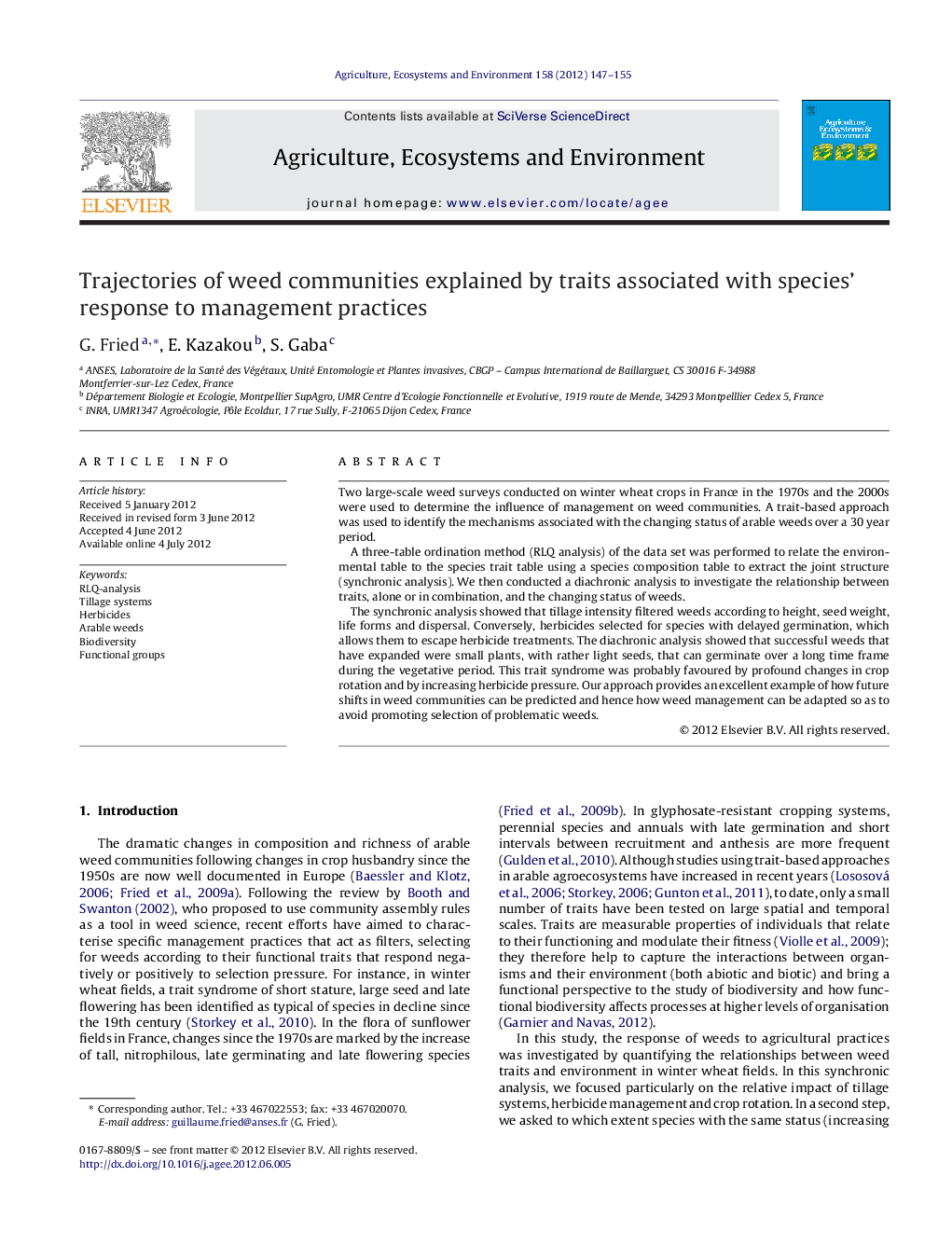| Article ID | Journal | Published Year | Pages | File Type |
|---|---|---|---|---|
| 2414501 | Agriculture, Ecosystems & Environment | 2012 | 9 Pages |
Two large-scale weed surveys conducted on winter wheat crops in France in the 1970s and the 2000s were used to determine the influence of management on weed communities. A trait-based approach was used to identify the mechanisms associated with the changing status of arable weeds over a 30 year period.A three-table ordination method (RLQ analysis) of the data set was performed to relate the environmental table to the species trait table using a species composition table to extract the joint structure (synchronic analysis). We then conducted a diachronic analysis to investigate the relationship between traits, alone or in combination, and the changing status of weeds.The synchronic analysis showed that tillage intensity filtered weeds according to height, seed weight, life forms and dispersal. Conversely, herbicides selected for species with delayed germination, which allows them to escape herbicide treatments. The diachronic analysis showed that successful weeds that have expanded were small plants, with rather light seeds, that can germinate over a long time frame during the vegetative period. This trait syndrome was probably favoured by profound changes in crop rotation and by increasing herbicide pressure. Our approach provides an excellent example of how future shifts in weed communities can be predicted and hence how weed management can be adapted so as to avoid promoting selection of problematic weeds.
► Tillage selects species according to size, life forms, seed weight and dispersal. ► Herbicides filter species according to their germination and flowering phenology. ► Species on the increase have a large germination and flowering range.
